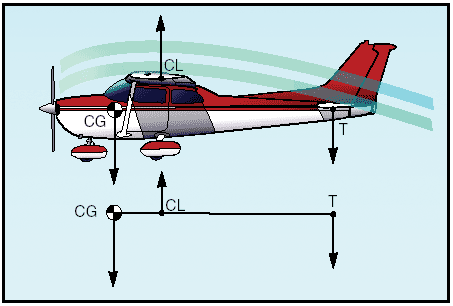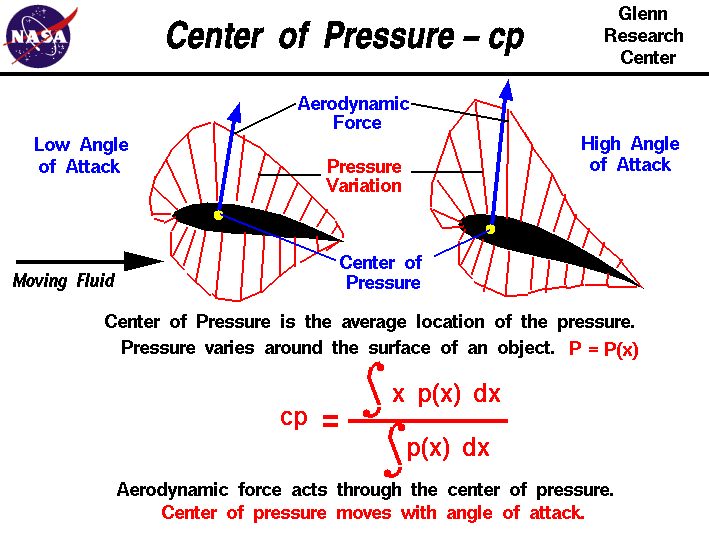All this bitchin' makes you all look very unattractive.
Strega wrote:No, you showed me some silly pictures, without any math, or correct theory to substantiate your claim of "tail lift"
OK here's a more formal version then.
Let's start with Von Mises' Theory of Flight (Dover, 1959) eqn. (35) in Section XVII.5.
http://books.google.ca/books/about/Theo ... edir_esc=y
I adopt his notation, although the working is mine.
That is, with:
M0 the pitching moment of the wing
M'0 the pitching moment of the tail
Mf the pitching moment of the fuselage
Mp the pitching moment of the propellor thrust
L the lift of the wing
L' the lift of the tail (both lifts positive when lifting upwards)
x_a the horizontal distance from the cg to the aerodynamic centre (ac) of the wing
x'_a the horizontal distance from the cg to the ac of the tail
M the total moment
W the weight of the aircraft
(We follow convention and say that positive moments are in the nose-up direction.)
M = M0 + M'0 + x_a.L - x'_a.L' + Mp + Mf --(1)
The equilibrium condition is that M = 0
and also we have
L + L' = W --(2)
That is, the sum of the lifts = the weight of the aircraft.
The tail airfoil is symmetric, therefore M'0 = 0
We consider the case where the engine is idling, therefore thrust is zero and Mp = 0
Mf, the pitching moment of the fuselage (and undercarriage) is hard to determine. Von Mises says it has the same order of magnitude and direction as the M0, the wing moment. He also says (p.513) that if the aircraft flies parallel to the longitudinal axis of the fuselage that Mf is zero. We'll consider this to be the case, although we note for a C182 the fixed undercarriage is an obvious source of asymmetry.
Then from (1) and (2):
0 = M0 + x_a.(W-L') - x'_a.L'
gathering terms in L' etc:
L' = (M0 + x_a.W) / (x'_a + x_a) --(3)
We're interested in the sign of L'. If it's positive then the tail lifts; if L' turns out to be negative then the tail applies a downforce.
The denominator of the r.h.s. of (3) is positive, so L' takes the same sign as the numerator:
L' > 0 ⟺ M0 + x_a.W > 0
What's the significance of this condition? It's exactly where I started, in the so-called "silly" diagram, except taking moments about the ac instead. M0 is the pitching moment of the wing about the ac, and x_a.W is the moment generated by the weight of the aircraft acting about the ac. M0 is negative for a wing with positive camber. If the magnitude of M0 is sufficient to overcome the weight acting at the cg then the tail is required to resist a nose-down moment, and therefore generates a down-force; L' will turn out to be negative.
On the other hand, if the magnitude of M0 is insufficient to counterbalance the weight of the aircraft acting about the ac, then the tail force will be positive, to hold the nose down.
What values do M0, x_a, and W take? Let's look at the C182, and here's the NACA data for the 2412 airfoil:
http://www.tricity.wsu.edu/htmls/mme/me ... ca2412.jpg
x_a is the distance from the ac to the cg. The ac is at 0.239-0.247 mac, close to station 37" as per the "silly" diagram. The cg at it's rearmost limit is at 48.5". So x_a has a maximum value of (48.5 - 37) = 11.5". W is the weight whose maximum value is 2950 lbs.
X_a.W is therefore a nose-up moment of, in the worst case, 2827 ft.lbs.
The pitching moment coefficient about the ac, Cm_ac, is close to -0.045 (thanks to Steve Pomroy for the data, noting your typo in your post, Steve). The moment itself is obtained from the equation for pitching moment coefficient:
M = q.S.c.Cm
where q is the dynamic pressure, S the wing planform area, c the chord and Cm the coefficient of pitching moment.
Again, for the C182, S = 174sq.ft, c = 5ft
At a speed of 100kts, 1atm, 59°F, q = 0.24 psi or 33.9 lbs/sq.ft
M0 = -1327 ft.lbs
Then M0 + x_a.W = 1500 ft.lbs, which is positive, and so the tail lifts.
Note that X_a.W is more than twice M0 - the pitch down moment of the wing is less than half that of the pitch-up moment of the weight of the aircraft, and that the difference is provided by that tail lift.




